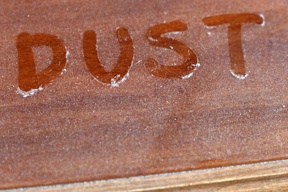 Soil and dust in homes often become the primary resting places for environmental toxins such as metals and metalloids that come from vehicle traffic and a variety of industrial sources. Residents within urban settings have a higher rate of exposure to contaminated dust from inhalation, ingestion and dermal contact. As a result, dust ingestion is often regarded as the primary source of low-dose mercury in urban children who spend much of their time indoors.
Soil and dust in homes often become the primary resting places for environmental toxins such as metals and metalloids that come from vehicle traffic and a variety of industrial sources. Residents within urban settings have a higher rate of exposure to contaminated dust from inhalation, ingestion and dermal contact. As a result, dust ingestion is often regarded as the primary source of low-dose mercury in urban children who spend much of their time indoors.
Because of the potential neurotoxin effect on children, chronic low-dose mercury exposure has become an increasing concern. Understanding the chemical composition of the dust is important to accurately estimate the exposure that these children face every day living in urban environments.
Teledyne Leeman Labs recently published an application note that details trace element testing results using a Hydra IIc Mercury Analyzer to determine the total elemental mercury in house dust samples in National Institute for Standards and Technology (NIST) Standard Reference Material (SRM) 2584 - Trace Elements in House Dust using EPA Method 7473. The testing followed the EPA Method 7473, which is approved for both laboratory and field analysis for mercury in solids and solutions using Thermal Decomposition, Amalgamation and Atomic Absorption Spectroscopy.
What is the Hydra IIc?
The Hydra IIc is a fully automated analyzer that measures mercury in solid and semi-solid sample matrices directly without acid digestion. It employs sample combustion (thermal decomposition), mercury concentration via gold amalgamation and detection by Cold Vapor Atomic Absorption Spectroscopy (CVAAS).
Origination of the Sample Dust
Approximately 65% of the material used for SRM-2584 was derived from HEPA® vacuum cleaners that removed dust and other surface debris from specific households in Montana, New Jersey, Ohio, and Wisconsin. This material was mixed with material taken from the sources used in the preparation of SRM-2583, which consisted primarily of vacuumed dust from cleaning services, motels, and hotels from North Carolina, Maryland, Ohio, and New Jersey.
Dust Sample Preparation
The material was sent out for radiation sterilization, and then shipped to NIST for final processing and blending. The raw materials were mixed and tumbled and the dust was separated from unwanted debris then screened through a 90 µm stainless steel sieve using vibration and a vacuum. Processed sub-lots of approximately 5 kg each were set aside and analyzed in order to develop a blending protocol. Selected sub lots were blended in a cone blender and then bottled. The only sample preparation involved with the SRM was the thorough mixing of the SRM bottle between sample weighings.
For the complete details, including charts and graphs, about the sample preparation, equipment calibration standards, procedures followed for the sample testing, results and conclusions, download the application note:

